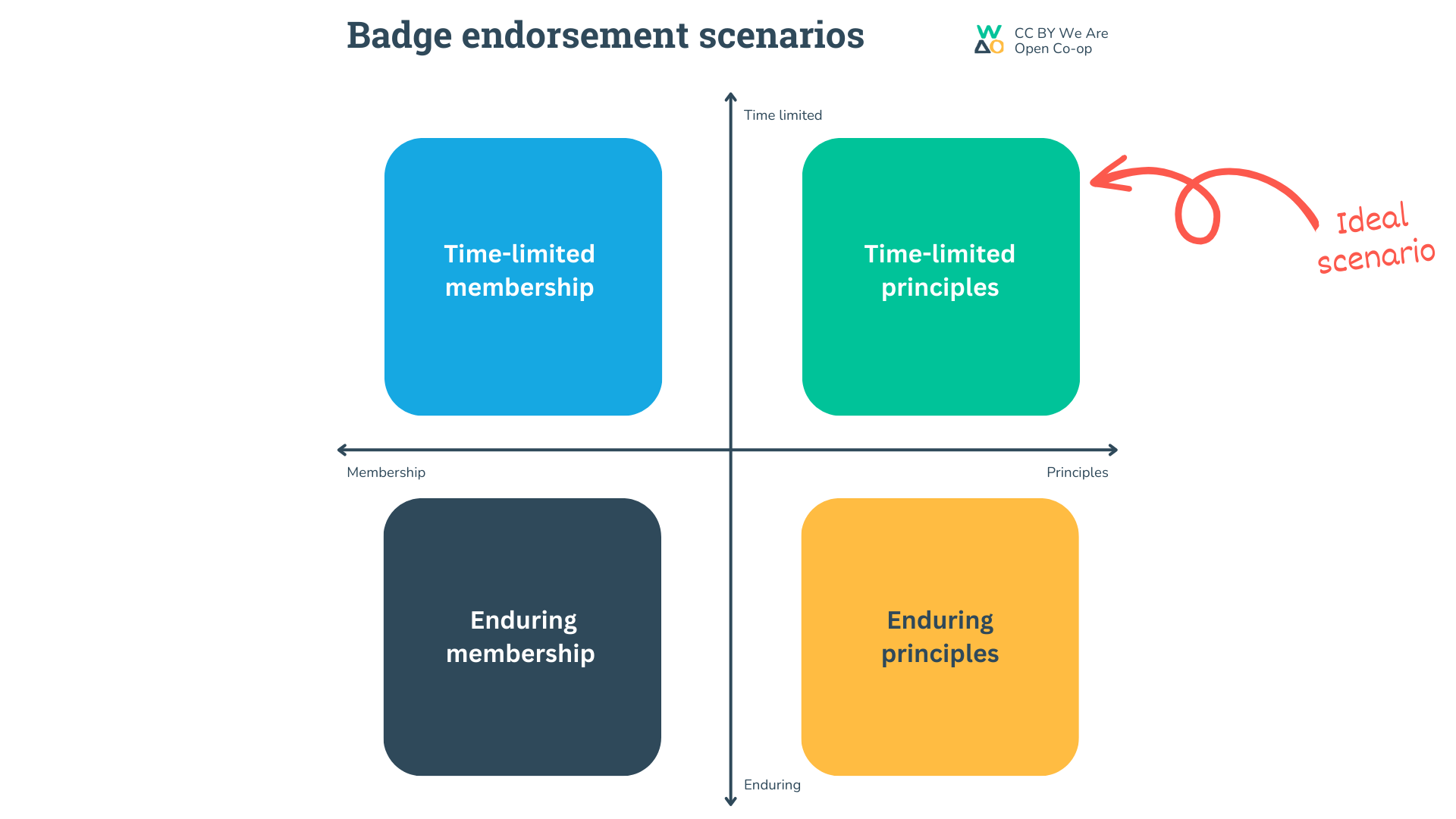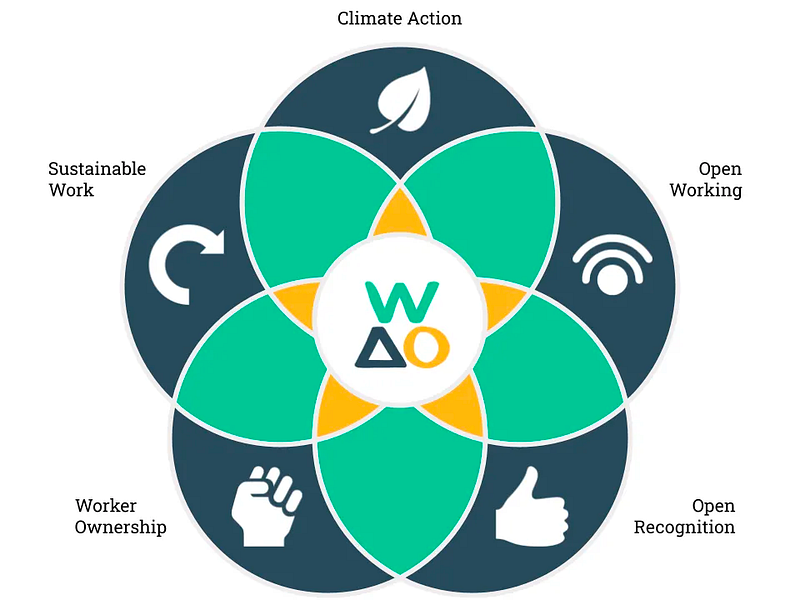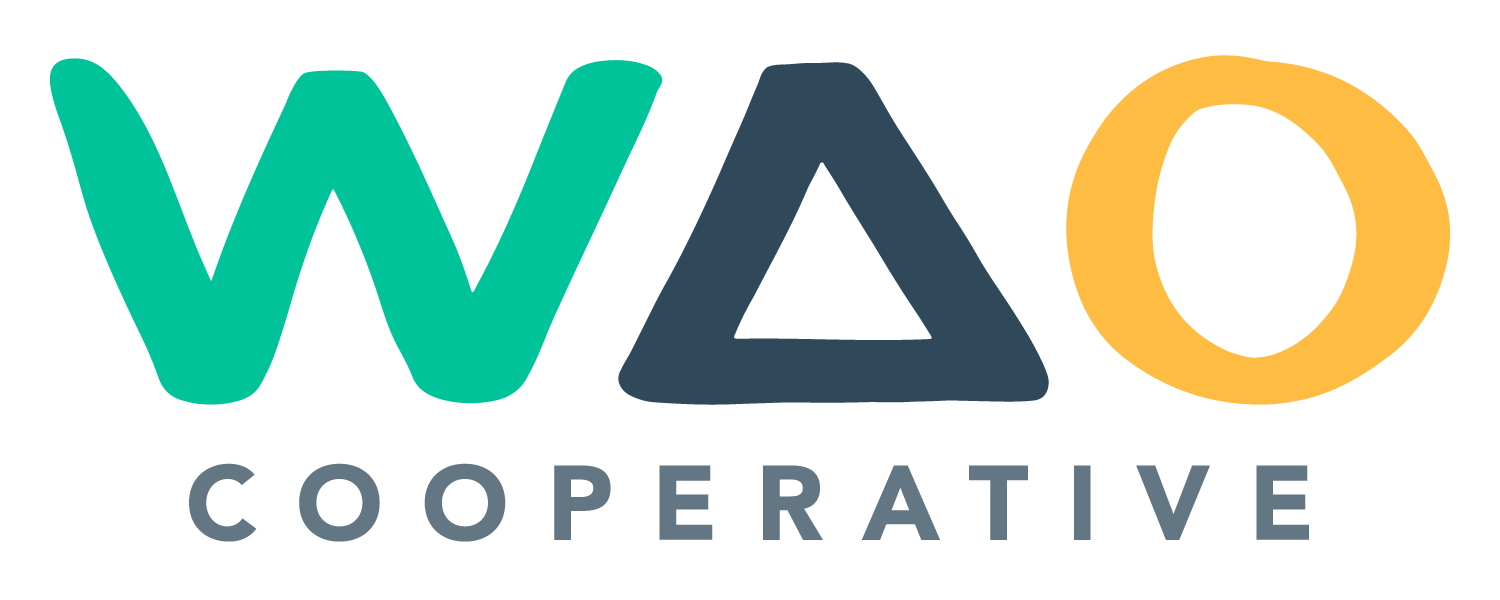The Future of Trust in Professional Networks
Exploring badge endorsements in cooperative communities

Background and context
In 2017, We Are Open Co-op (WAO) presented groundbreaking ideas on building and credentialing ‘cooperative character’ at the Cooperative Education and Research Conference. Fast forward to today, and we find ourselves revisiting this concept, driven by three key developments that we’ll delve into in this post. We’ll also outline the exciting directions we’re considering for future work.
🎨 1. Interdisciplinary Focus
As highlighted in our previous post, Finding the Others, we’re keen on awarding badges to individuals and organisations that intersect with WAO’s five core priority areas:

🌱 2. New Partnerships
Our recent collaboration with workers.coop, a new federation of worker cooperatives, has rekindled our interest in badging for cooperative character. Together, we aim to foster collective economic, social, and cultural progress, guided by the seven foundational cooperative principles:
- Voluntary and Open Membership
- Democratic Member Control
- Member Economic Participation
- Autonomy and Independence
- Education, Training, and Information
- Cooperation among Cooperatives
- Concern for Community
💡 3. Technological Advances
The latest version of the Open Badges standard has matured, offering a transformative approach to endorsements. Specifically, badges can now be endorsed retrospectively, adding a new layer of credibility and flexibility to the ecosystem.

Rethinking trust networks through badge endorsements
If you’re familiar with LinkedIn, you’ll know that the platform allows you to ‘recommend’ colleagues by writing brief testimonials about their performance or approach to work. Similarly, you can ‘endorse’ them for specific skills.
Open Badges take this concept a step further by making learning and skills visible. As we highlighted in a previous post, the evolving Open Badges standard now enables retrospective endorsements, adding an extra layer of credibility to the skills, knowledge, or behaviours your organisation values and wishes to promote.
Our approach to badge endorsements is straightforward. We aim create categories based on universally accepted rules within a given group or professional body. For federations of co-operatives, these categories are naturally aligned with the well-established co-operative principles we’ve discussed earlier.

The above image comes from our presentation to the Cooperative Education and Research Conference In 2017. Reflecting on that work, especially in light of recent advancements in the Open Badges ecosystem, opens up exciting avenues for future exploration.

Exploring Badge Endorsement scenarios
Guiding principles in professional networks serve to encourage specific behaviours. In the context of co-operatives, the aim is to cultivate global cooperation. To better understand deeper into how badges can facilitate this, we introduce a 2x2 grid that categorises badge endorsements from simple to complex, capturing the essence of co-operative behaviour.
Within this framework, national or international co-operative organisations like Co-ops UK, workers.coop, or the International Cooperative Alliance (ICA) have the capacity to issue badges to individual co-operatives. These badges can subsequently be endorsed by any people or organisations that engage with the co-op.
Our goal extends beyond merely recognising ‘membership.’ Such a narrow focus doesn’t adequately reflect a co-op’s alignment with co-operative principles. Instead, our grid aims to offer a more nuanced view, encouraging visibility, collaboration, and proactive engagement.
Starting at the bottom-left quadrant of the grid, we have the ‘enduring membership’ model. Here, a single badge is issued once to each federation member. The ideal evolution is towards the top-right quadrant, labelled ‘time-limited principles.’ In this advanced model, co-operatives receive annual badges endorsed by their collaborators, demonstrating ongoing commitment to co-operative principles.
Let’s break down each quadrant for a more detailed understanding.
1. Enduring membership badges
A federation such as workers.coop issues a single ‘membership’ badge to its member organisations when they become a member. This badge can be endorsed by other individuals and organisations in the federation with which they collaborate.
✅ Pros: Simple to implement and offers a snapshot of network membership.
❌ Cons: Lacks focus on actions or behaviours, offering no incentive for members to actively embody federation values.
2. Time-limited membership badges
A federation such as workers.coop issues a single ‘membership’ badge to its member organisations for each year they’re a member of the federation. This badge can be endorsed by other individuals and organisations in the federation with which they collaborate.
✅ Pros: Provides an annual overview of active participation, without revoking badges from departed members.
❌ Cons: Increased administrative burden due to yearly badge issuing.
3. Enduring principles-based badges
A federation such as workers.coop issues seven different badges to its member organisations when they become a member. Each badge represents one of the seven cooperative principles. This badge can be endorsed by individuals and organisations with which they collaborate, either inside or outside the federation.
✅ Pros: Encourages a focus on specific co-operative principles, enhancing network alignment..
❌ Cons: Potential for confusion with multiple badges; risk of neglecting some principles.
4. Time-limited principles-based badges
A federation such as workers.coop issues seven different badges to its member organisations for each year they’re a member of the federation. This badge can be endorsed by individuals and organisations with which they collaborate, either inside or outside the federation.
✅ Pros: Offers an annual update on active principle adherence, aiding in the search for like-minded collaborators.
❌ Cons: High administrative effort for yearly updates and potential for ‘badge fatigue.’

Conclusion
In summary, our 2x2 grid provides a sophisticated framework for badge endorsements in professional and cooperative networks. Transitioning from a singular ‘membership’ badge to annually updated, principles-based badges enables a more dynamic and transparent ecosystem. This not only identifies network participants but also gauges their active contribution to shared values. The result is enhanced transparency, accountability, and alignment with cooperative principles, contributing to a stronger, more engaged community.
We see this as a significant stride towards fostering trust and cooperation on a larger scale. Our team is full of strategic ideas on badge endorsements, from trojan mice, to cow paths, and constellation creation. If you’re interested in exploring these concepts further, we’d be delighted to assist. Please get in touch!


Discussion